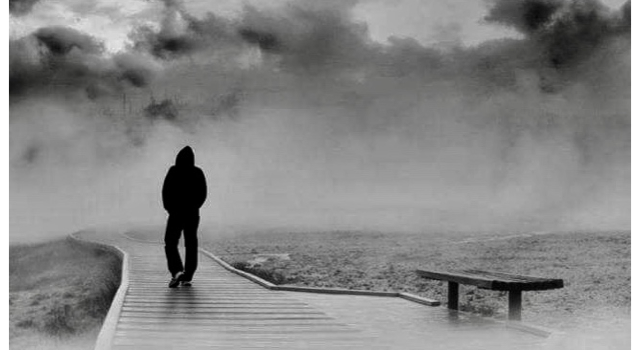Six water companies overcharged customers between £800million and £1.5billion by “significantly or systematically” under-reporting the…

Chinese Farmers Lose Their Land.
Every year three to four million Chinese farmers lose their land to make way for industrial parks or residential developments.
Because no land is officially privately owned in communist China, farmers have no choice but to surrender their farmland and accept compensation paid at levels set by local officials.
The officials, meanwhile, view the transformation of rural land into industrial zones or residential developments as a kind of financial alchemy.
Apart from the potential kickbacks from developers, it turns virtually worthless rural land into high-value, taxable plots that generate much-needed revenue for the local governments.
By boosting revenues, local officials are able to ingratiate themselves with their superiors, hitting the steep economic growth targets imposed by Beijing.
The downside is that farmers are often infuriated by the paltry levels of compensation offered in the ‘land grabs’, setting off rural protests involving tens of thousands of angry farmers across China every year.
The China Academy of Social Sciences estimates there were more than 90,000 violent ‘mass incidents’ in 2006 – and the number increases annually.
The Secret Visit To China.
On a cold day in February, 1972, Richard Nixon stepped out of the presidential plane, Air Force One, at Peking airport as a Chinese military band played The Star – Spangled Banner.
On the windswept tarmac, Nixon shook hands with China’s Prime Minister, Zhou Enlai.
The visit, Zhou said later, would ‘shake the world’, with Nixon meeting the elderly but all-powerful Mao Zedong within a few hours of his arrival.
Zhou was right.
After 23 years of estrangement between the United States and China, which included their troops fighting one another in Korea, the two powers were on a path towards establishing the relationship which has become, today, the most important link between any pair of nations on Earth.
Nixon’s trip had been prepared in utmost secrecy by his National Security Advisor, Henry Kissinger.
Not even the State Department was in the loop as Kissinger laid the groundwork for the visit.
The Secretary of State, William Rogers, was eventually included in the party that went to China but, when the President went to meet Mao, Rogers was left behind.
Kissinger was in the room, sitting in an armchair beside Nixon.
The opening to China was, in many ways, the most enduring achievement of Kissinger’s time as National Security Advisor and then Secretary of State.
It confirmed him as the most famous diplomat of his age.
A ‘Simple Girl’ Executed With A Bullet In The Back Of Her Head.
25-year-old He Xiuling was not a hardened criminal but a simple girl from the countryside sucked into the drugs trade and used as a ‘mule’ by a domineering boyfriend.
Worse still, it appears she was led to believe she might receive a lighter sentence if she confessed.
She did just that – and was condemned to death.
At her trial Xiuling had pleaded to the judge:
“Please give me a second chance to live. I want to live. I am still young.”
But while wealth and political connections can often secure leniency in China, Xiuling had neither.
Just nine months after her court appearance she was executed with a bullet in the back of her head.
Such was her naivety she believed right to the end that she would be spared and handed a 15-year jail term.
She excitedly told fellow inmates, “I will still only be 40 when I’m free.”
More prisoners are executed in China every year than in the rest of the world combined.
A website believed to be based in Hong Kong, turned their anger on Chinese officials who notoriously escape severe sentences for serious crimes.
One comment read: “What these women did is nowhere near as bad as what corrupt officials in China do. They are the ones who should be shot”.
The Great Wall Of China.
Its scale and audacity defy belief.
Stretching from the North Korean border to the inhospitable Taklimaken Desert, The Great Wall of China was built using only the most rudimentary tools and is an engineering marvel.
The Great Wall is a collective term – the first wall was started in 220BC and the most recent was completed in 1620.
But there was only ever one aim.
A 4000-mile long barrier to protect China from invaders.
Female Rule In England.
In 1553, as the sick king Edward VI lies dying, England faces a terrible dilemma.
The nine closest contenders to the throne are all female.
Edward’s elder half-sisters Mary and Elizabeth lead the way, followed by a string of cousins including Lady Jane Grey.
All these women are intelligent and educated, but the idea that a mere woman should wield the highest authority in the land strikes the diplomats and dukes who cluster around the deathbed as ‘monstrous’.
Everyone knows that man is the head of woman, and the king is head of all.
How, then, is it possible for a woman to be king?
As it turned out, having a woman on the throne was not only possible, but a recipe for success.
Following a bumpy few years under Mary Tudor, the succession passed in 1558 to Elizabeth, who ushered in a golden 45-year period of relative peace and prosperity.
What all those doomsayers had forgotten was that England had a tradition of female rule.
Four centuries earlier, Matilda, granddaughter of William the Conqueror, had briefly seized power.
She was followed over the next 300 years by a trio of exceptional women – Eleanor of Aquitaine, Isabella of France and Margaret of Anjou – who exerted almost total control over the country by virtue of being married or mother to kings far weaker than they.
Princess Victoria And ‘Boy Jones’.
When 18-year-old Princess Victoria ascended the throne in 1837, she found herself on the receiving end of some decidedly creepy attention.
Lonely men wrote offering to marry her.
Creepiest of all, though, was Edward Jones, a teenage street urchin who made a habit of breaking into Buckingham Palace and wandering around for days at a time in the hope of meeting the Queen.
‘Supposing he had come into the bedroom, how frightened I should have been’, wrote Victoria in her journal after Jones had been discovered lurking in her dressing room after stealing some of her underwear.
What makes the Jones case so fascinating is the way the Establishment responded to the threat posed by one persistent street urchin.
For a start, there was embarrassment at the way Jones had exposed lax Royal security.
Ageing flunkies dozed half-sozzled through the night while the nearest police station was over a mile away.
When he claimed at his trial to have been living in the Palace for more than a year, having slid down a chimney, no one was quite sure whether to believe him.
Amid such confusion, there was no option but for the magistrate to acquit Jones of breaking in with the intention of theft – it was, he said, just a daring folly.
Despite being decidedly ugly, Jones became a folk hero.
If the ‘Boy Jones’, as he became known, had left it at that, then his might have been a jolly tale.
The problem was the young man was clearly in the grip of a compulsion, because he kept on returning to the palace to perch on the throne or rifle through Victoria’s letters.
Alarmed by his persistence, the authorities first kidnapped the lad and handed him over to the Navy for a long spell at sea.
When that didn’t work, he was charged with theft and sent to Australia.
But Jones turned up again in England years later like a bad penny.
By this time, though, both the ‘Boy’ and the object of his obsession were middle-aged, and Victoria was no longer anyone’s idea of a romantic princess.
There were no more attempts to break in.
Richard Dadd, Artist And Madman.
The Victorian artist Richard Dadd is famous for two things.
First, painting extraordinarily exact and peculiar pictures of goblins and fairies.
Second, stabbing his father to death.
Dadd was born in Chatham, Kent, in 1817, one of seven children.
As a young man, he gained a place in the Academy School in London, and was soon exhibiting landscape paintings of Devon and scenes from early English history involving King Harold and King Alfred.
Aged 22, he had the world at his fingertips, although the world he preferred to paint was a fantasy, populated by fairies flying through the air, floating past naked ladies.
Did these paintings contain the seed of his future madness?
Staying overnight in the village of Cobham, the artist suggested a walk in the park.
Once there, he drew out a knife, and stabbed his father to death.
He fled to France, where he attempted to kill a fellow passenger in a coach and was duly arrested.
He later explained to a doctor at Bethlem Mental Asylum – popularly known as Bedlam – that his true father was the Egyptian sun god Osiris, and that his earthly father was an impostor who had to be sacrificed in order to set Osiris free.
Searching his house, investigators found that a portfolio containing drawings of many of his friends, all with their throats cut.
He was to spend the next 43 years of his life locked up in mental institutions.
But throughout those 43 years, he carried on painting.
Dadd died of TB in Broadmoor in 1886, and remained largely forgotten for the next 75 years.
Then in 1963, the war poet Siegfried Sassoon bequeathed his most compelling painting, The Fairy Feller’s Master Stroke, to the Tate Gallery, where it soon became a cult object – a magnet for the hippy movement, and for all those who like to imagine that madness is simply a higher form of sanity.



This Post Has 0 Comments